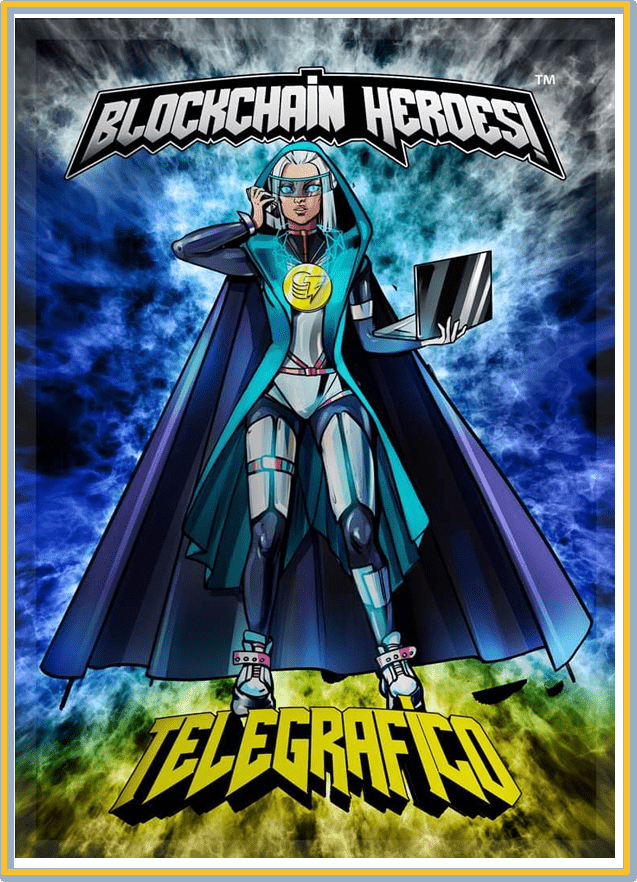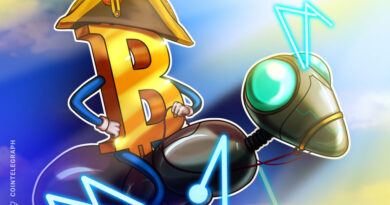Investing in Blockchain Gaming: Why VCs Are Betting Big
“Blockchain integration essentially enables community ownership of the entire gaming ecosystem, which in turn allows game publishers to uniquely monetize their model, create richer and deeper experiences, and extend the lifetime value of the assets that they are creating.”
How healthy is the gaming industry? Fortnite thoughtfully provided a concise answer to that question on June 16th.
In advance of the much-anticipated unveiling of The Device, a live event on the game platform, slots were full half an hour early as eager gamers logged in to witness Epic’s latest twist in its flagship game.
The number at which participation was capped? Twelve million players in-game. Another eight million had to be content watching the stream.
For context, NFL Sunday Night Football on NBC — the highest-rated TV presentation in the United States — garners fewer viewers. And that’s also accounting for recorded shows.
When Blizzard Entertainment released World of Warcraft (WoW) in 2004, few non-enthusiasts could have imagined that the pivot from real-time strategy to the massively multiplayer online role-playing game (MMORPG) genre would result in over a hundred million registered accounts ten years later.
By 2017, the game had grossed almost $10 billion in revenue. It had become one of the highest grossing video games of all-time.
Activision’s Call of Duty: Black Ops launched in 2010, as the seventh in the series. The franchise has since released a new version annually. When Black Ops was released, it set records across games, movies, and books — taking in more than $650 million in its first five days.
Momentum in the industry doesn’t seem to be slowing down. Last year, gaming broke another record for annual revenue, at $143 billion. To put that into perspective, the music industry earned $24 billion, and TV and video combined earned $290 billion. Gaming is expected to grow from 31 percent of entertainment industry revenue to 36 percent by 2023.
According to Microsoft, when you include everything from free mobile games to complex multiplayer PC or console games, gamers worldwide number over 2 billion. And that number is growing. The more elaborate publishers are able to deliver to multiple platforms. Epic Games’ Fortnite, for example, has a version for PC, Mac, mobile, Playstation, XBox, and Nintendo Switch.
And as blockchain technology begins to infiltrate the industry, the financial stakes couldn’t be higher.
New funding models could change the dominance of major platforms. New gaming models could change the way we play. And new revenue models could change the way value is accrued across the industry.
All of which means that major investors are taking an even closer look at gaming, and the potential impact of blockchain technology, than ever before.
How a digital and connected world changed entertainment forever
Digital technologies changed how music and film could be produced. The internet changed how they could be distributed. For both forms of entertainment, technological changes made it cheaper to produce and easier for independent artists to distribute.
Those same changes, however, had the opposite impact on the gaming industry. With consumer demand for enhanced graphics, audio quality and internet-based multiplayer capabilities, the cost of producing video games has exploded.
Budgets for game development and marketing for so-called triple-A games — those with large budgets and heavy development — are now Hollywood blockbuster-esque. Activision’s Call of Duty: Modern Warfare 2 cost around $50 million to produce and had a marketing budget in the order of $200 million.
The most expensive game ever created, Rockstar North’s 2013 Grand Theft Auto 5, was developed for a staggering $137 million, with only slightly less spent on marketing and release costs. At today’s prices, that puts the total just shy of a total of $300 million.
By 2018, there had been 18 games created for a total cost of at least $100 million, with Rockstar, Activision, Microsoft Studios, and Sony featuring prominently on that list of primarily franchise games.
The high upfront costs and long lead times to produce games creates risks for game creators, meaning large developers and publishers have grown to dominate the industry, as startups seek out investors in an effort to compete.
While the high profile games garner a lot of the media attention, the industry should very much be considered as structured along more bipolar lines: indie games and triple-A games. And it is indie games that are attracting venture capital.
Blockchain has created a new funding model for games, with the ability for developers to create tokens that work across games. Block Bastards, creators of the in-beta BLOX game will be using their token, QUDO, to fund the 18-month development costs and to reward players. BLOX will run on the Telos network and, in a revenue-sharing style arrangement, players and games earn 90% of Qudo tokens generated and the company and any founding partners 10%.
Diogo Abreu, Marketeer/Product Evangelist at Block Bastards explains:
“QUDO is a blockchain-based service for games which rewards players for their activity and performance with a coin called QUDO. These QUDO tokens aim to be widely used within the industry, allowing game developers and players to generate purchasing power, without the need for in-game advertisements, while giving them the tools to empower their games’ visibility. Blox uses QUDO, like any other game can do… QUDO is… open for every game developer that would like to integrate this technology into their game.”
However, only a handful of indie blockchain game developers have been able to attract venture capital. William Quigley of WAX, the Worldwide Asset eXchange that bridges the physical gaps between “collectors and traders, buyers and sellers, creators and gamers, merchants, dApp creators, and game developers” says that:
“Indie games are funded the same way all other start-ups are funded… through a combination of personal savings, friends and family, angel investors and, in rare situations, venture capital. The personal capital of the founders is by far the number one source of funding video games.”
The failure rate of new games is high, so VC funds look for a 10x return from pre-release video games, much as they would any other startup. As Quigley pointed out:
“An investor needs to see this level of potential upside in order to offset the strong likelihood that the video game will not succeed.”
Venture capitalists are risk takers by nature. But the upside potential of the gaming sector, one growing at double digits annually, is defined by its longevity. A popular game will live on for a number of years, with the ability to franchise out into new releases.
And it is that very feature of games that has the smart money wanting in on the action. As Quigley points out:
“Successful video games have two unusual traits that makes them highly appealing to investors. Popular video games enjoy incredibly long product life cycles compared to other consumer categories.”
“We live in an age where product life spans are measured in months. Your ‘must have’ phone or hot apparel item become obsolete in a year or less. But video games are different. Once a video game achieves a certain player threshold, it can generate high cash returns consistently for a decade or more. Video games are also very well positioned to address a global audience. Video game platforms are now able to easily leverage third party telecom and computing infrastructure around the world, such as high performance content delivery networks. This means that successful video games can rapidly scale their audience and revenues.”
Monetization models are changing too
Monetization models have changed as games are increasingly delivered online. Games as a Service (GaaS) models have arisen to replace the simple upfront one-off purchase model. While some games continue to require an initial purchase to play them, others are free to play, but require the purchase of in-game assets within them, such as weapons, power boosts, and alternative skins.
Square Enix, the developer of the Tomb Raider series, revealed in a presentation that:
“Titles that have become global hits recently have tended to be offered via the “Games as a Service” model, and we believe this is going to be the mainstream model for gaming in the future. In developing future titles, we will approach game design with a mind to generate recurring revenue streams.”
Subscription and pay-to-play models remain, and in-game ads are not uncommon, especially on free-to-play or freemium games. But increasingly, game publishers rely on continued, long-term user engagement.
This is once again an opportunity for blockchain technology to push its case. As Chris Gonsalves of ConsenSys opined in a piece on the emerging Play2Earn model for Cointelegraph Magazine this week, “Creating earnings opportunities for players in addition to just spending opportunities can help to establish more sustainable digital worlds that have flourishing auction houses and robust secondary marketplaces.”
Increasing both the number of gamers who are responsible for creating revenue, and the amount of engagement players spend on an individual game, could have major financial repercussions: Gonsalves points out that a one percent increase in the number of players spending money within games could inject an extra $6.5 billion into the industry.
More from NFT and Blockchain Gaming Theme Week
The crux of blockchain’s potential here is the theory that player loyalty will increase when they have more skin in the game: when their digital assets can be transferred between games or platforms, or traded on open markets, they will invest more of their hard-earned cash. Leaving digital items on the table as they walk away from a game is antithetical to creating investment in time or money, or so the theory goes.
David Markley of Algorand’s Business Solutions group told us that:
“Blockchain enables people to transact in a secure and transparent way, and the adoption of this technology in gaming represents a significant increase in the global markets that gaming publishers can tap into.”
“Blockchain integration essentially enables community ownership of the entire gaming ecosystem, which in turn allows game publishers to uniquely monetize their model, create richer and deeper experiences, and extend the lifetime value of the assets that they are creating.”
Algorand has attracted game developers looking for technology that is “purpose built to operate at the speed and scale that the gaming community has come to expect.”
Blockchain-enabled gaming has investors excited about “the prospect of open-ended economies within games,” says Gonsalves. He told Cointelegraph Magazine that:
“In most traditional games, developers tightly control walled garden ecosystems and typically players cannot trade items. Furthermore, one digital skin is indistinguishable from another, and no transparency exists of an item’s supply or inflation rate. Game items represented as NFTs [non-fungible tokens], a blockchain-based way to timestamp and track items, allows developers to enhance their in-game economies by creating true digital scarcity and allowing players to own (and sell) the assets they collect.”
Gaming as the next phase of social media
If there’s one thing we’ve learned from the rise of social media, it’s that engagement is everything. And it’s the multiplayer capabilities pioneered by the triple-A games that have propelled the industry toward a new paradigm. Facebook and Twitter are real-time, interactive platforms driven by user engagement — a model the gaming industry has almost inadvertently come to mirror, and which has attracted the attention of some of the tech sector’s largest investors.
Andreessen Horowitz has funded a number of gaming startups. The VC firm led a $10 million raise for Super Evil Megacorp late last year, and the studio is working on a cross-platform game called Project Spellfire. Rob Pardo, the ex-lead designed or World of Warcraft’s now heads up Bonfire Studios — another to enjoy a16z support, and focused on the user connectivity aspect of gaming:
“We want friends to connect through our games and share amazing experiences, tell the stories, and come closer together.”
It is exactly that trend — players connecting through games — that Andreessen Horowitz is excited about. The company backed Roblox, a game with 115 million monthly players that represents a blurring of lines between players and developers. In Roblox, “kids and teens who play games learn to make their own games… allow[ing] them to more easily create and share worlds that anyone can play.”
The prolific venture capital firm sees games “becoming social networks; going cross-platform; and getting increasingly more user-generated.” Noting the success of Fortnite, and the buzz generated around its events, the company succinctly explains:
“Games are the next social network.”
Adam Draper’s adventurous Boost VC invested in TeleporterVR, which aspires to be “the biggest social platform for gamers.” And now blockchain-based gaming platforms are also beginning to attract VC interest. DMarket, a platform where gamers can trade in-game assets, just raised $6.5 million in a funding round led by Almaz Capital. It marked the venture firm’s first foray into the in-game trading model.
The platform uses blockchain technology to create a virtual economy of gaming assets like skins and weapons. The business model behind the platform, helping to fund free-to-play video games through the buying and selling of game assets, appears an obvious use case for blockchain technology.
As the walls between social media and gaming crumble, publishers, VC firms and blockchain developers alike are seeking new ways to deliver increasingly-immersive experiences. And as Garrison Breckenridge noted in another feature for Cointelegraph Magazine, it’s no coincidence that DAOs (decentralized autonomous organizations) powered by blockchain are also overlapping with both. “Summoners. Mages, Guardians. Mercenaries. Ragequitting. It’s very apparent that DAOs enthusiastically embrace the gamer lexicon. While clearly stemming from overlapping domains of nerd-dom, the terminology provides a lingua franca for new players looking to experiment in blockchain-driven gaming.”
The gaming industry sees no signs of slowing down. With new streaming and blockchain capabilities empowering developers with new delivery modes and funding models, it is no wonder the fast-growing segment of consumer entertainment has stirred the pot of venture capital attention.
As part of our NFT and Gaming Theme Week, we are offering a free limited edition collectible in association with Blockchain Heroes.
Promotion ends July 15th 2020











